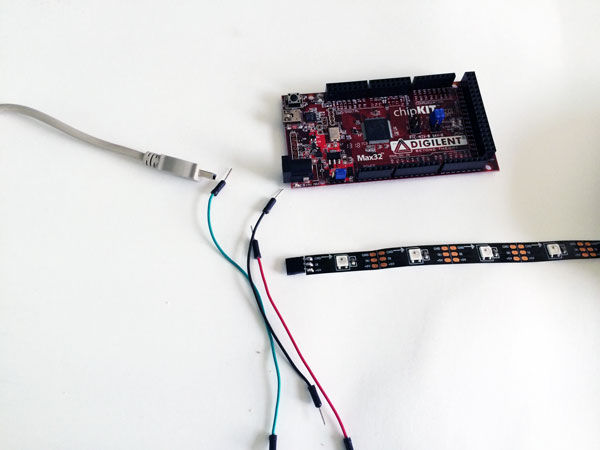
#Pic32 wire library chipkit software
2.1.7 - Real-Time Clock and Calendar2.1.8 - Analogue-to-Digital Converter AD1CON1 AD1CON2 AD1CON3 AD1CHS AD1PCFG AD1CSSL Operation of the ADC module 2.1.9 - Interrupts Configuring Timer 1 interrupts Configuring external interrupt 0 PIC32 interrupt service routines 2.2 - Summary 2.3 - Exercises Chapter 3 - PIC32 Microcontroller Development Tools 3.1 - Software Development Tools 3.1.1 - Text Editors 3.1.2 - Assemblers and Compilers 3.1.3 - Simulators 3.1.4 - High-Level Language Simulators 3.1.5 - Simulators With Hardware Simulation.Chapter 2 - PIC32 Microcontroller Series2.1 - The PIC32MX360F512L Architecture 2.1.1 - The Memory 2.1.2 - The Microcontroller Clock Clock sources Clock outputs USB clock CPU clock Peripheral clock Configuring the operating clocks Performance and power consumption considerations The flash wait states 2.1.3 - Resets 2.1.4 - The Input/Output Ports TRISx PORTx LATx ODCx CNCON SET, CLR, INV I/O port registers Digital/analogue inputs 2.1.5 - The Parallel Master Port (PMP) PMCON PMMODE PMADDR PMDOUT PMDIN PMAEN PMSTAT 2.1.6 - Timers Timer 1 Timers 2, 3, 4, 5.1.3.13 - Real-Time Clock1.3.14 - Sleep Mode 1.3.15 - Power-On Reset 1.3.16 - Low-Power Operation 1.3.17 - Current Sink/Source Capability 1.3.18 - USB Interface 1.3.19 - Motor Control Interface 1.3.20 - CAN Interface 1.3.21 - Ethernet Interface 1.3.22 - ZigBee Interface 1.3.23 - Multiply and Divide Hardware 1.3.24 - Operating Temperature 1.3.25 - Pulse Width Modulated (PWM) Outputs 1.3.26 - JTAG Interface 1.3.27 - Package Size 1.3.28 - DMA 1.4 - Microcontroller Architectures 1.4.1 - RISC and CISC 1.5 - 8, 16, or 32 Bits? 1.6 - Summary 1.7 - Exercises.


#Pic32 wire library chipkit serial
Cover Title Page Copyright Page Contents Preface Acknowledgments Chapter 1 - Microcomputer Systems 1.1 - Introduction 1.2 - Microcontroller Systems 1.2.1 - RAM 1.2.2 - ROM 1.2.3 - PROM 1.2.4 - EPROM 1.2.5 - EEPROM 1.2.6 - Flash EEPROM 1.3 - Microcontroller Features 1.3.1 - Supply Voltage 1.3.2 - The Clock 1.3.3 - Timers 1.3.4 - Watchdog 1.3.5 - Reset Input 1.3.6 - Interrupts 1.3.7 - Brown-Out Detector 1.3.8 - Analogue-to-Digital Converter 1.3.9 - Serial Input-Output 1.3.10 - EEPROM Data Memory 1.3.11 - LCD Drivers 1.3.12 - Analogue Comparator.


 0 kommentar(er)
0 kommentar(er)
